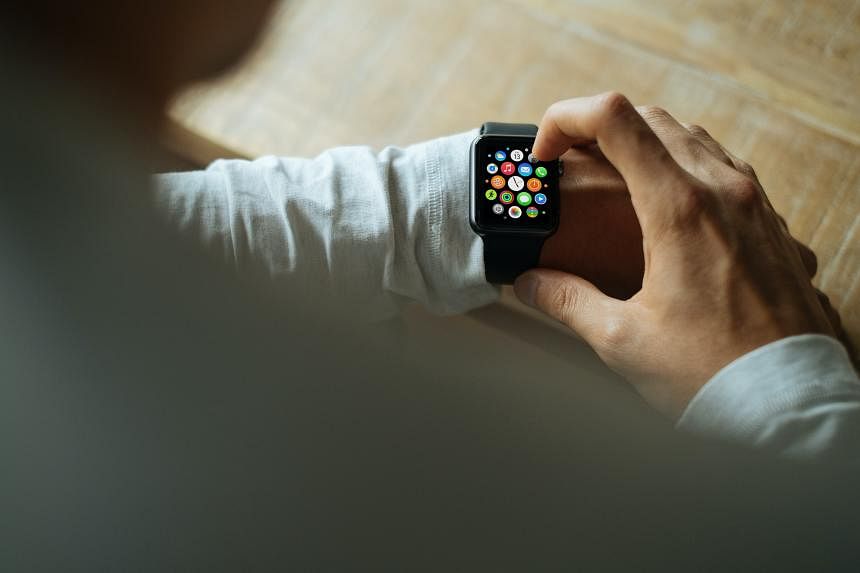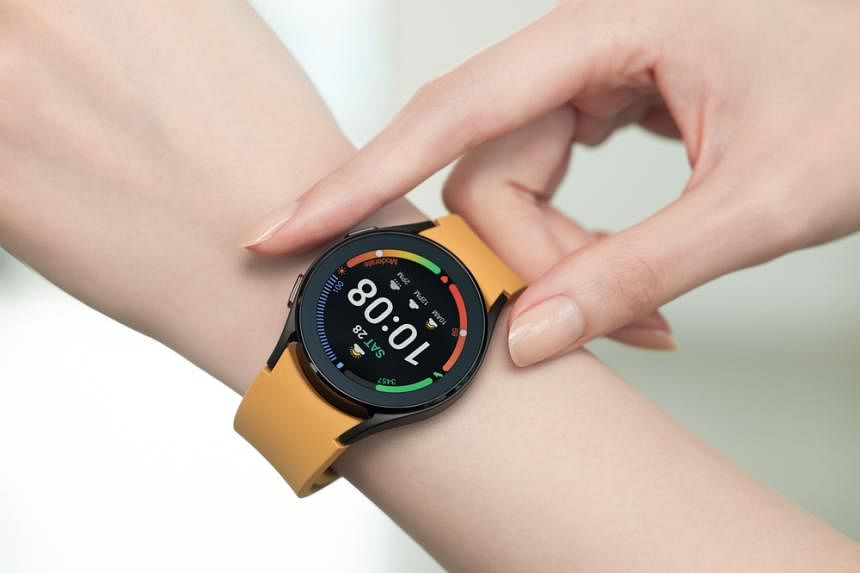SINGAPORE – More intimate healthcare and fitness uses are coming up on consumers’ wrists as smartwatch makers cosy up to their wallets.
The wearables market, which smartwatches dominate, is projected to grow at a compound annual rate of at least 4 per cent until 2027, said market researcher Canalys.
In the first half of 2023, 86 million units of wearables had already been shipped globally. More than 180 million wearables were shipped worldwide in 2022, most of which were some form of smartwatch, said Canalys.
Healthcare and fitness uses in smartwatches in recent times have catapulted the popularity of these devices. They are an extension of the mobile phone and monitor a plethora of readings, from a user’s heart rate to his location and even how well he sleeps.
Wearables are appealing because they offer personalised readings of the user’s health, said Professor Lim Chwee Teck from the National University of Singapore’s (NUS) Institute for Health Innovation and Technology.
He is one of many experts at the university who are developing wearable-related technology, including stretchy electrical circuits that patch themselves when torn by oozing out liquid metal, and sensors that track movement during rehabilitation, which will allow users to monitor their own progress.
Prof Lim said wearables offer the unprecedented potential of continuously monitoring vital signs and other personal readings.
This capability presents a treasure trove of data for healthcare professionals to provide customers and for the development of new tools powered by artificial intelligence (AI), which will need a sizeable pool of data to work reliably, he said.
“The saying is ‘there is no AI without data’, but there is also no data without technology to collect it. That is why wearable technology is so promising to our field,” said Prof Lim.
Innovators have been pushing watches to do more since the early days of all-electric digital watches, pioneered by the Hamilton Watch Company in the 1970s.
In the 1980s, Seiko crammed a mini-television into a watch display, and in the 1990s, inventor Steve Mann – the “father of wearable computing” – built a watch that could receive messages wirelessly with computers.
Soon, early models of wearables with fitness trackers, like those from Garmin, Nike and Pebble, grew in popularity.
In Singapore, the smartwatch market has been relatively stable, with around 750,000 units sold each year between 2020 and 2022, said global market intelligence firm IDC.
The sales of smartwatches here have been driven largely by health and fitness users, while national movements like those organised by the Health Promotion Board have raised awareness of such devices.
The market for souped-up wristwatches and other wearables has drawn the attention of tech manufacturers such as Samsung, Apple and Google, which have integrated the watches into their ecosystem of electronics.
Samsung is working with various public-sector organisations and enterprises here to support work and explore new applications, Mr Timothy Tan, Samsung Singapore’s head of enterprise and government business, told The Straits Times.
Some hospitals are exploring them as a notification system for medical professionals, who might not always have their hands free to check their phones for alerts, said Mr Tan.
Some hotels are considering equipping chambermaids with wearables to allow them to quickly alert their colleagues to mishaps or assaults within the hotel, he added.
Looking to the future, experts said wearables are unlikely to retain the form they hold today.
NUS Heat Resilience and Performance Centre director Jason Lee believes manufacturers will mash up more sensors within a single device to perform more uses.
The centre’s research into how people’s core temperature correlates to their skin temperature may one day help smartwatches accurately estimate if a user is overheating.
Prof Lim said sensors on wearables will evolve to blend into clothing, furniture and other items used daily in order to appeal to, say, those who do not want to wear a device.
But to win the trust of the masses, companies also need to be clear about where data is stored and how it is used.
“The data collected from wearables and other smart devices is often handled by many groups, and how users will retain privacy and their rights to their own data is something that the industry is still figuring out,” said Prof Lim.



